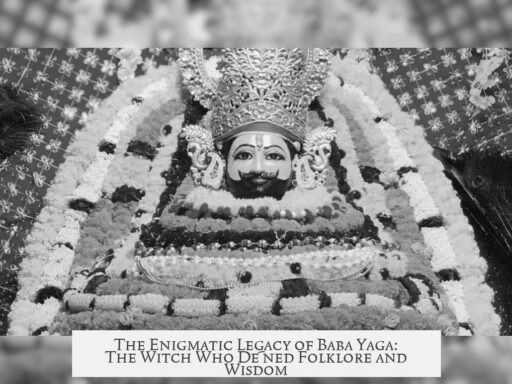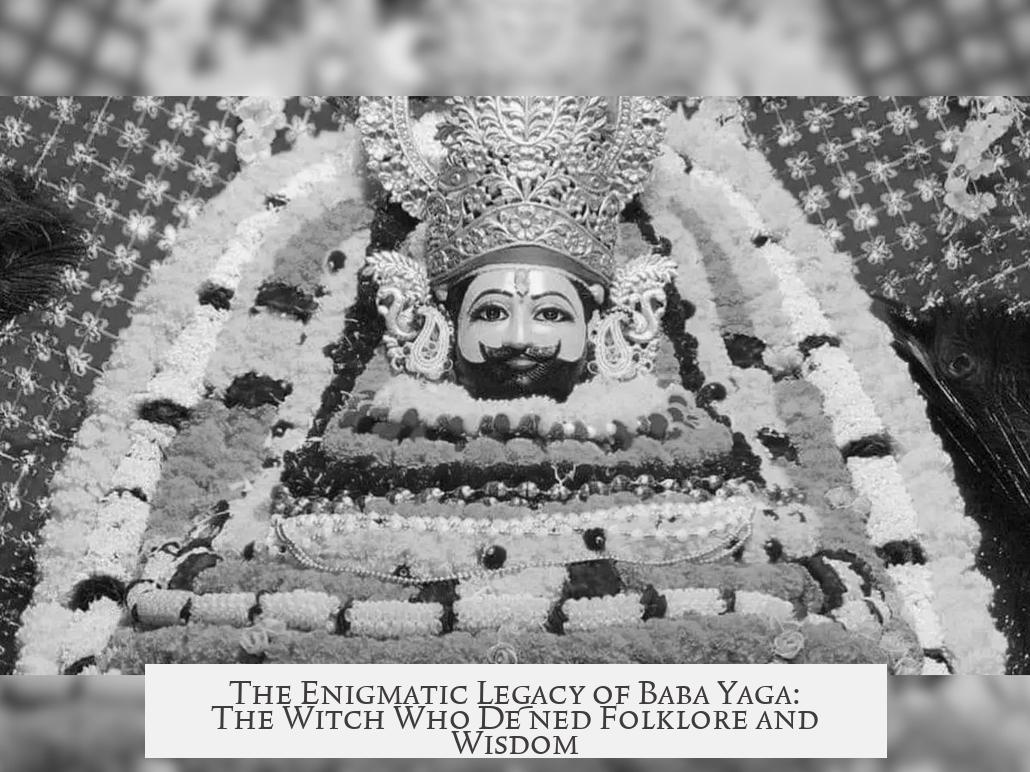Baba Yaga is a figure from Eastern Slavic folklore, primarily Russian, originating in pre-Christian times. Since she comes from an oral tradition, no early written records document her first appearances. Her role aligns with other European witches as an antagonist: an old, grotesque woman living in the forest.
Unlike most unnamed witches in folklore, Baba Yaga is a distinctive, named character. This sets her apart and makes her a central figure in many tales. Folklore depicts her as both terrifying and ambiguous but mainly warns against venturing into the deep forest, symbolizing danger and the unknown.
The legends featuring Baba Yaga often emphasize moral lessons about kindness and generosity. They warn listeners about the perils of the forest while advocating for humane behavior. In some stories, the heroine wins Baba Yaga’s favor and escapes harm by showing kindness to her gate, dogs, and cat, rewarding them with gifts.
Other narratives explore the theme of help from unexpected sources. For example, when a heroine must complete difficult tasks like spinning yarn for Baba Yaga, she receives assistance from mice that spin the yarn after she shares gruel. These tales reinforce reciprocity and decency as virtues that can bring aid.
Baba Yaga’s essence lies in her dual role. She is a cautionary figure warning against entering dangerous places alone and a test of human character. Her stories teach the value of generosity as a means to survive hardship and escape evil.
| Aspect | Details |
|---|---|
| Origin | Eastern Slavic pre-Christian folklore |
| Role | Antagonist witch living in the forest |
| Unique Feature | Named witch, rare in folklore |
| Themes | Kindness, generosity, danger of deep forest |
| Moral Lesson | Be kind and generous; avoid the deep forest |
- Baba Yaga has pre-Christian Slavic roots with no early scripts.
- She acts as a named witch antagonist in folklore.
- Legends emphasize kindness, generosity, and caution toward forests.
- Stories show help from animals as a reward for kindness.
- She serves mainly as a cautionary and moral figure in Slavic culture.
The Spellbinding History of Baba Yaga: Witch, Wisdom, and Wilderness

What is the history of Baba Yaga? Simply put, Baba Yaga is a mysterious, ancient figure from Eastern Slavic folklore, primarily Russian, whose stories stretch back to pre-Christian times. Because she hails from that distant era, there are no early written records about her. Instead, her legend lives on through oral traditions, passed down for generations.
Her origins are deeply woven into the fabric of early Slavic culture, long before Christianity spread through Eastern Europe. This means Baba Yaga’s roots are tangled with pagan beliefs, ancient rituals, and connections to nature and the wilderness. She was part of a worldview where forests were vast, dangerous, and mystical places – both real and symbolic. If you’ve ever wondered why folk tales so often warn you about wandering “deep into the forest,” Baba Yaga’s story is a key reason.
Now, here’s a juicy twist: unlike many witches in European folklore who remain nameless shadows or faceless villains, Baba Yaga has a distinct identity. She is a named character — a rarity in witch tales. That little fact gives her stories more weight and personality. It’s as if the Slavic storytellers wanted us to remember her name, either to watch out for her or perhaps to learn from her.
The Role of Baba Yaga: Villain or More?
To the casual eye, Baba Yaga looks like a classic antagonist. She’s described as an old, grotesque woman living deep in the forest. Sound familiar? That archetype crops up across European folklore—think wicked witches lurking in dark woods. But Baba Yaga isn’t just an evil figure scaring kids into obedience.
Yes, she is often the story’s obstacle or villain, but her role is multilayered. Sometimes she helps the heroine, sometimes she hinders her. She can be terrifying but also wise, cruel but fair. This complexity makes her stand out from the usual “scary witch” mold.
Lessons Hidden in the Legends
Baba Yaga’s tales carry valuable messages. They emphasize kindness, generosity, and the importance of respect — especially in interactions with strangers or forces beyond human control. Many stories highlight the dangers of venturing deep into the forest alone, symbolizing the risks of leaving the safety of societal norms or the known world.
For example, in one classic legend, the heroine manages to escape Baba Yaga’s clutches by befriending the witch’s gate, dogs, and cat, simply by giving them gifts and treating them kindly. It’s like a medieval approach to networking—be nice, and you just might get out alive!
Another tale reveals Baba Yaga’s seemingly cruel demand for the heroine to spin yarn. Yet, the mice come to the girl’s rescue, spinning the yarn for her when she kindly shares her gruel. Here, kindness to small creatures or insignificant beings becomes a metaphor for broader generosity. Plus, it’s a reminder that help can come from unexpected places.
What Baba Yaga Really Means
When you take a step back, Baba Yaga is more than just a scary witch. She embodies the unknown, the wild, and the natural world’s primal power. Her figure warns people—especially children—about the dangers of the dark forest, the unknown dangers lurking beyond civilization’s borders. More importantly, she represents a test of character. Respond to challenges with kindness and generosity, and you might survive or even win her favor.
These qualities set her apart from mere villains. She’s a cultural symbol to enforce social values without direct preaching. And since Baba Yaga’s stories come from a time without textbooks, they cleverly made complex lessons memorable through exciting narratives.
Why Baba Yaga Still Captivates Today

In the 21st century, Baba Yaga continues to fascinate. She appears in books, movies, and even video games, often as a figure who is both wise and dangerous. This shows her staying power as a complex character. She’s not just an old witch in a hut on chicken legs anymore; she’s a symbol of nature’s power, the mystery of the unknown, and the ancient wisdom passed down through folklore.
She inspires questions like:
- What does it mean to be kind when facing danger?
- How do we confront the unknown in our own lives?
- Can old legends still teach us moral lessons?
By exploring Baba Yaga’s history and stories, we connect with human fears and hopes that remain relevant. Her character invites us to balance caution with courage and to remember that even the darkest places hold lessons worth learning.
Final Thoughts: More Than Just a Witch
Baba Yaga isn’t merely a figure to frighten children or entertain adults. She’s a multifaceted emblem of Eastern Slavic culture’s ancient wisdom. Her pre-Christian origins remind us how folklore evolves through centuries. Her unique name and role defy simple categorization. And her stories maintain a timeless message: kindness and generosity are powerful tools, especially when navigating the unknown.
Next time you hear her name or meet a story about the chicken-legged hut in the deep forest, remember she is not just a spooky tale. She’s a bridge to the past, a mirror to human nature, and a whispering guardian of forests and morals alike. Now, doesn’t that make her legend a little bit more magical?



